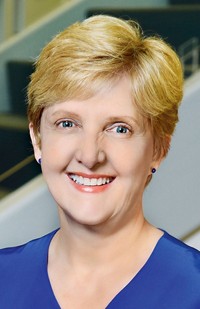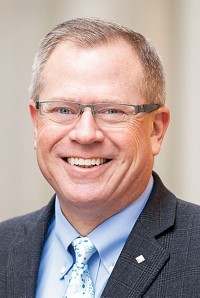Advertisement
Grab your lab coat. Let's get started
Welcome!
Welcome!
Create an account below to get 6 C&EN articles per month, receive newsletters and more - all free.
It seems this is your first time logging in online. Please enter the following information to continue.
As an ACS member you automatically get access to this site. All we need is few more details to create your reading experience.
Not you? Sign in with a different account.
Not you? Sign in with a different account.
ERROR 1
ERROR 1
ERROR 2
ERROR 2
ERROR 2
ERROR 2
ERROR 2
Password and Confirm password must match.
If you have an ACS member number, please enter it here so we can link this account to your membership. (optional)
ERROR 2
ACS values your privacy. By submitting your information, you are gaining access to C&EN and subscribing to our weekly newsletter. We use the information you provide to make your reading experience better, and we will never sell your data to third party members.
Letters to the editor
Polymerization and polymer crystallization
An article in the Oct. 23, 2017, issue of C&EN reported that polymers do not polymerize as smoothly as envisaged up till now but by “consecutive wait and jump steps,” according to AFM observations (page 4). This is indeed a novel finding that can lead to important developments.
This behavior reminds me of a similar phenomenon reported almost 15 years ago and confirmed several times since. The classical observation of polymer crystallization by polarized optical microscopy suggested a smooth growth front at the spherulitic boundary, with all lamellae growing simultaneously at the same rate. However, L. Li [and colleagues] have shown, thanks again to AFM, that the crystallization of individual polymer lamellae does not proceed smoothly but evolves by consecutive wait and jump steps (Macromolecules 2000, DOI: 10.1021/ma000273e). A nucleation event is required for growth to occur: A lamella being nucleated can grow while a second one remains at rest until nucleation occurs, thus defining different instantaneous growth rates for vicinal lamellae at the lamellar level—in each case the growth stops after a while until there is again nucleation. Of course, when an ensemble of lamellae is observed at the level of optical microscopy, statistics plays its role and a smooth average is seen, hiding the molecular events.
These two reports, that on polymerization and that on crystallization, may be two aspects of a similar phenomenology.
Robert E. Prud’homme
Montreal
Diversity in chemistry
In response to ACS President Dorhout’s description of the state of education and the chemical enterprises (C&EN, Jan. 1, page 28) and to his request that we share our ideas and suggestions for improving the profession and enhancing diversity in chemistry, I thought I would answer his call. I think the ACS Scholars Program and Project SEED have been very successful. In fact, our members who created and sustained these programs have done a stellar job of increasing diversity in terms of luring and supporting minority and underrepresented students into chemistry studies.
However, I would like to suggest that there is a significant portion of our population with extremely diverse talents and innovative skills that may not have received the same level of targeted support and awareness. I’m referring to people with disabilities, and one simple, inexpensive, and effective way to encourage students with disabilities to enter the chemical enterprise is to give them role models; there are many chemists who have been successful—even famously so—because they persevered and did not let their disabilities (or special abilities) or other people stop them from following their dreams to become chemists.
I have looked through 100 past issues of C&EN, and although there has been a great improvement in terms of showing images of a diverse chemistry community in laboratory settings, not one issue had a photo of a person with a visible disability in a lab. As a member of the ACS Committee on Chemists with Disabilities, I respectfully suggest that the editor consider this. Furthermore, I believe we can provide her with a number of photographs of chemists in wheelchairs, with service animals, etc., in a lab and performing research worthy of notice by C&EN writers. ... It is way past time to level the playing field.
Carl E. Heltzel
Seneca, S.C.
Project SEED
I was very pleased to see Bibiana’s comment on Project SEED’s 50th anniversary (C&EN, Jan. 29, page 2). I was the chair of the Committee on Project SEED when it celebrated its 25th anniversary, and our job at the time was to help the program overcome some very serious financial and organizational difficulties. We were successful at the time, I am happy to say, and it is extremely satisfying to see that the program is still thriving so many years later. Of all I may have accomplished in my many years of association with ACS, that service with Project SEED is what I am most proud of. I have always felt that all ACS members and staff can be very proud to have created and sustained this excellent program for so many years. May it continue to prosper until such time when it fades away because it is no longer needed.
Dennis Chamot
Burke, Va.
Corrections
Jan. 29, page 8: In the news story about using mechanochemistry to make noble metal compounds, the formulas in the image caption for the gold compounds should be NH4AuCl4 and NH4AuBr4.
Jan. 29, page 24: In the feature story “France aims to lead world in climate research,” the amount of Giuliano Giambastiani’s grant was misstated as $1.5 million. The correct amount is $1.8 million.




Join the conversation
Contact the reporter
Submit a Letter to the Editor for publication
Engage with us on Twitter